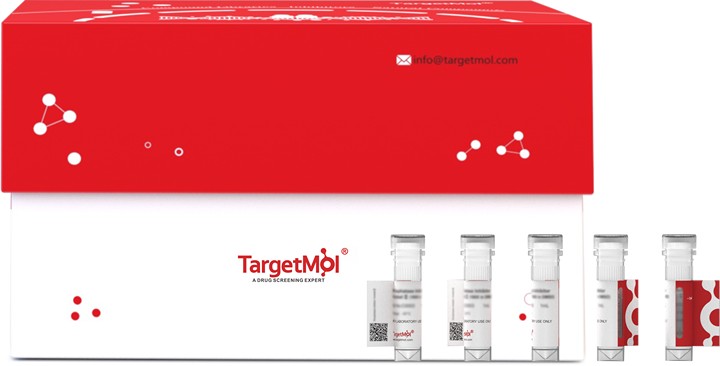购物车
全部删除  您的购物车当前为空
您的购物车当前为空
EphA4 Protein, Human, Recombinant (His) is expressed in HEK293 mammalian cells with His tag. The predicted molecular weight is 59.5 kDa and the accession number is P54764-1.

| 规格 | 价格 | 库存 | 数量 |
|---|---|---|---|
| 5 μg | ¥ 428 | 6-8日内发货 | |
| 10 μg | ¥ 683 | 6-8日内发货 | |
| 20 μg | ¥ 1,130 | 5日内发货 | |
| 50 μg | ¥ 2,270 | 5日内发货 | |
| 100 μg | ¥ 4,430 | 5日内发货 | |
| 200 μg | ¥ 6,730 | 5日内发货 | |
| 500 μg | ¥ 13,800 | 5日内发货 | |
| 1 mg | ¥ 28,800 | 5日内发货 |
| 生物活性 | Activity has not been tested. It is theoretically active, but we cannot guarantee it. |
| 产品描述 | EphA4 Protein, Human, Recombinant (His) is expressed in HEK293 mammalian cells with His tag. The predicted molecular weight is 59.5 kDa and the accession number is P54764-1. |
| 种属 | Human |
| 表达系统 | HEK293 Cells |
| 标签 | C-His |
| 蛋白编号 | P54764-1 |
| 别名 | TYRO1,SEK,HEK8,EPH receptor A4 |
| 蛋白构建 | Val20-Thr547 |
| 蛋白纯度 | > 95% as determined by Bis-Tris PAGE;
> 95% as determined by HPLC |
| 分子量 | 59.5 kDa (predicted); 60-70 kDa (reducing condition, due to glycosylation) |
| 内毒素 | < 1.0 EU/μg of the protein as determined by the LAL method. |
| 蛋白性状 | Lyophilized powder |
| 缓冲液 | Lyophilized from 0.22μm filtered solution in PBS (pH 7.4). Normally 8% trehalose is added as protectant before lyophilization. |
| 复溶方法 | Reconstitute the lyophilized protein in distilled water. The product concentration should not be less than 100 μg/ml. Before opening, centrifuge the tube to collect powder at the bottom. After adding the reconstitution buffer, avoid vortexing or pipetting for mixing. |
| 存储 | It is recommended to store recombinant proteins at -20°C to -80°C for future use. Lyophilized powders can be stably stored for over 12 months, while liquid products can be stored for 6-12 months at -80°C. For reconstituted protein solutions, the solution can be stored at -20°C to -80°C for at least 3 months. Please avoid multiple freeze-thaw cycles and store products in aliquots. |
| 运输方式 | In general, Lyophilized powders are shipping with blue ice. |
| 研究背景 | EPH receptor A4 (ephrin type-A receptor 4), also known as EphA4, belongs to the ephrin receptor subfamily of the protein-tyrosine kinase family which 16 known receptors (14 found in mammals) are involved: EPHA1, EPHA2, EPHA3, EPHA4, EPHA5, EPHA6, EPHA7, EPHA8, EPHA9, EPHA10, EPHB1, EPHB2, EPHB3, EPHB4, EPHB5, EPHB6. The Eph family of receptor tyrosine kinases (comprising EphA and EphB receptors) has been implicated in synapse formation and the regulation of synaptic function and plasticity6. EphA4 is enriched on dendritic spines of pyramidal neurons in the adult mouse hippocampus, and ephrin-A3 is localized on astrocytic processes that envelop spines. Eph receptor−mediated signaling, which is triggered by ephrins7, probably modifies the properties of synapses during synaptic activation and remodeling. Ephrin receptors are components of cell signalling pathways involved in animal growth and development, forming the largest sub-family of receptor tyrosine kinases (RTKs). The extracellular domain of an EphA4 interacts with ephrin ligands, which may be tethered to neighbouring cells. Ligand-mediated activation of Ephs induces various important downstream effects and Eph receptors have been studied for their potential roles in the development of cancer. |